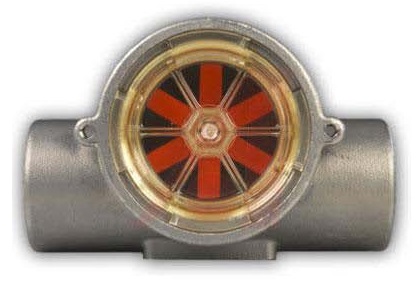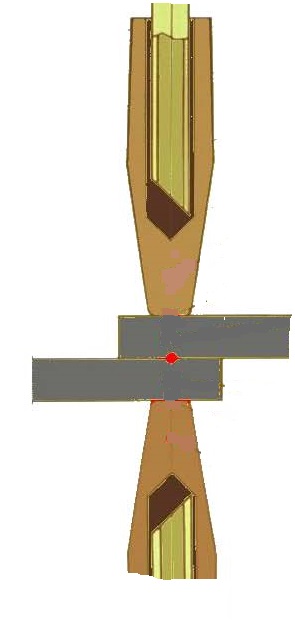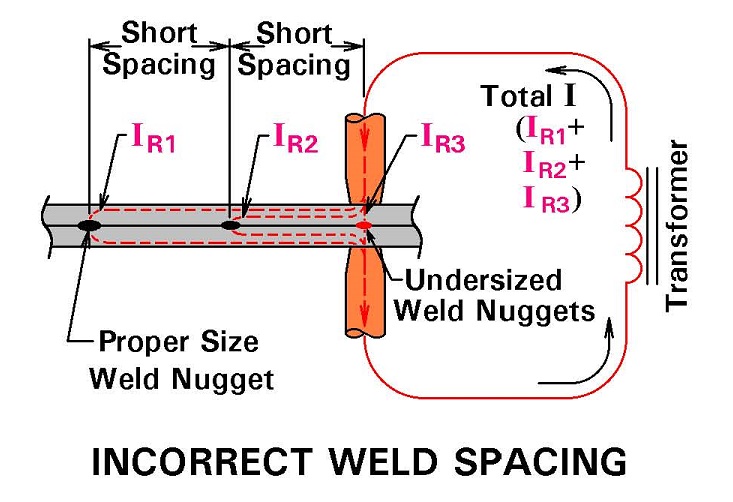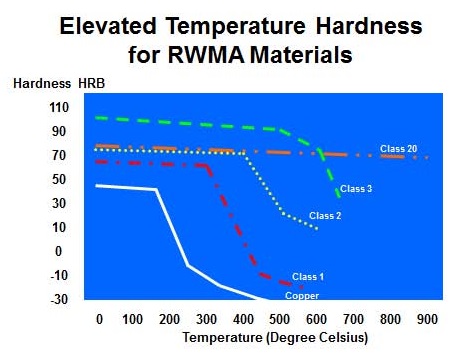
Spot Welding
Questions and Answers
Yes, resistance welding electrodes should always be water cooled.
The water for the electrodes should come directly from the water manifold. The flow rate should be optimally 5.5 L/minute (1.5 gallons/minute) at a water temperature of 18 – 29 deg C (65 – 85 deg F). Flow should never be less than 2 L/minute (0.5 gal/minute). Additional flow and water specifications can be found in AWS Standard - J1.2 “Guide to Installation and Maintenance of Resistance Welding Machines” Water flow tubes should be located within 6 mm (¼ inch) of the hole bottom. This prevents steam pockets from forming. Water flow on the exit side should be monitored with flow indicators or gauges. 

FLOW INDICATOR PROPERLY LOCATED WATER TUBES
This question was generated after the person read the article in this blog:
“IS THERE A MINIMUM SPACING BETWEEN SPOT WELDS”

This question was just answered a few weeks ago in this blog. Please refer to:
“HOW MUCH POWER IS USED IN RESISTANCE WELDING”
The actual value of power costs depends upon local power pricing and the power factor or the individual equipment and set up.
Reference: RWMA Resistance Welding Manual 4th Edition
In North America the most commonly used electrode materials for galvanized steel are RWMA Class 1, 2 and 20. By the quantity Class 1 and 2 are the most popular by far. Class 20 finds applications where the fabricator has weld schedules that make use of its unique properties – good conductivity and high heat resistance. Class 20 is sold at a premium for its higher heat properties.

In a previous article there is a complete discussion of this topic:
“WHY IS RWMA CLASS 20 USED FOR SPOT WELDING GALVANIZED STEEL?”
Answers to the questions asked do not exist in the literaturer. This question has entered an area of academia and testing to reach definitive answers to the questions presented. This is beyond the scope of this blog.
Reference: RWMA - Resistance Welding Manual 4th Edition
Page 14 of 44
Have a Question?
Do you have a question that is not covered in our knowledgebase? Do you have questions regarding the above article? Click here to ask the professor.
